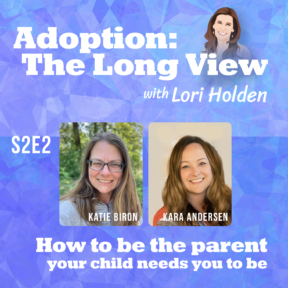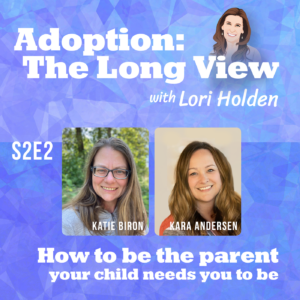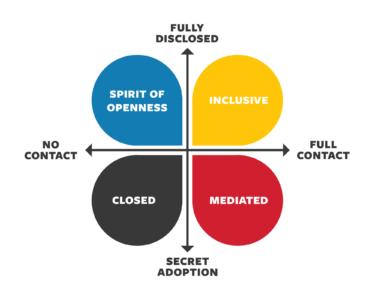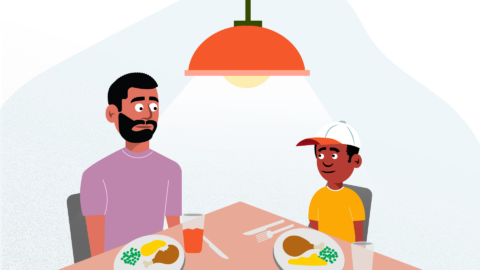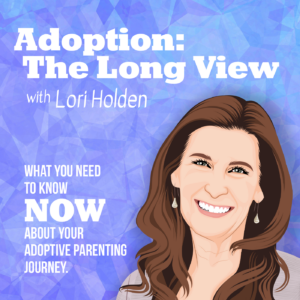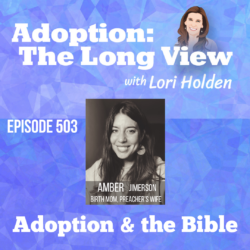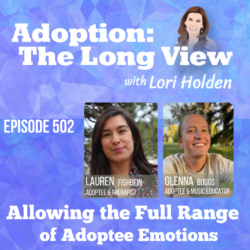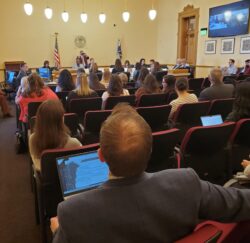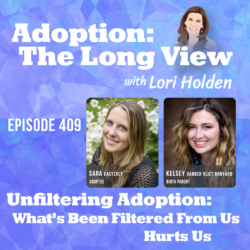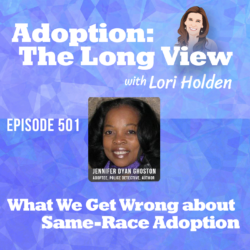Adoptive parents don’t always realize that raising an adoptee comes with this extra layer of emotional work that you’re going to have to do.
— Katie Biron, STAR Adoptive Parent group facilitator —
↑ Listen right here! ↑
Adoptive parent support professionals Katie Biron and Kara Andersen are my guests on this new episode of Adoption: The Long View. Both are absolutely amazing in their abilities to coach adoptive parents with wisdom and compassion.
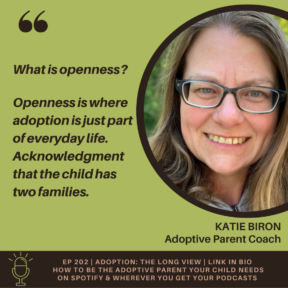
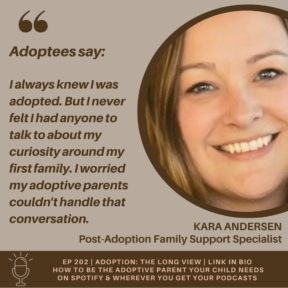
What Adoptees Really Need From Their Parents
I worked closely with Katie and Kara, along with Angela Tucker (Ep 105) to create a new tool — a short animated video — that helps adoptive parents understand what adoptees really need from their parents.
The four of us recently unveiled our video courtesy Amara, a Seattle-based nonprofit that focuses on the needs of children within families formed through adoption.
Listen in as we:
- Talk about why the framework in the video is necessary and how it helps families;
- Explain the differences between openness and contact;
- Explore what openness and closedness mean in adoption, and why one leads to more secure attachment than the other;
- Offer suggestions for how to be the parent your child needs you to be.
Prefer to read? Here’s a transcript (but listening is so much better, and besides,
you’ll miss the woodpecker in the background 🐦).
What is Your Adoptive Parenting Style?
Every adoptive family can be plotted according to four quadrants based on contact with birth family (horizontal axis) and openness within the home — the ability to talk about adoption issues as they arise (vertical axis).
Images below are from our animated video about openness in adoption.
Low Contact + Low openness
If there is low contact with birth parents and low openness — the ease in which parents can think and talk about adoption — the family is in the Closed quadrant.
Our children are straddling this: that one family suffered great loss to create the family they’re being raised in. And just being able to acknowledge that and sit with it is one of the most important things we can do as adoptive parents.
— Katie Biron, Ep 202
Contact without Openness
If there IS contact but the family is not quite comfortable thinking and talking about adoption, it is in the Mediated quadrant.
It’s not “Yeah, I’m here whenever my adopted child has questions — I will definitely be there when they start to ask.”
What we DO know is that kids don’t necessarily ask. They will behave. They will act out. They will do all sorts of things that indicate they have something to say.
But asking questions is not necessarily their first go-to.
— Kara Andersen , Ep 202 —
Openness without Contact
When birth family is, for any reason, unavailable, but parents are still able to make space for their existence and talk about adoption with ease, the family is in the Spirit of Openness quadrant.
If there is a true safety concern and contact cannot be had, it’s holding space within yourself that if things were to change and this birth parent were to reach out, and their circumstances have changed, you acknowledge that your child will benefit from having them in their life.
— Katie Biron, Ep 202 —
Contact + Openness
If there is both high contact and high openness, the family is in the Inclusive quadrant.
Showing that you care in a deeper way will invite that sense of safe space, will invite the child to feel that this home has within it space for my first birth family, as well as the love and attachment I have for my adoptive family.
— Kara Andersen Ep 202
Openness First, Contact Second
When adoptive parents first pursue openness, they are more likely to want to pursue contact, rather than doing it out of obligation or just to check a task off a list (such as sending picture or arranging a visit).
It matters less where families are horizontally this grid. What really matters in being the parent your child needs you to be is to continually seek elevation on the chart above. Keep that in mind as you watch the video.
Show Notes from Episode 202
- Katie’s website: FosteringConnectionsforFamilies.com
- Katie’s Adoptive Parent Group on Facebook: Fostering Connections for Families on Facebook
- Kara’s Adoptive Families Support Services
- Kara’s STAR Adoptive Parent Group
- The Primal Wound, a book mentioned in the episode
I hope you love the part about Pirate’s Booty (yes, the snack!) as much as I do. Such great advice about pop-up conversations from Katie.
Equally valuable is Kara’s assertion that making room for birth family — emotional space and, whenever possible, physical space — actually creates more secure attachment between you and your child(ren).
Openness and the authentic and resilient relationships that grow from it can make all the difference. Not only for adoptee, but also for adoptive parents.
How to Tune In Regularly
You can find us on Adopting.com, and on these and other platforms.
- Spotify
- Apple Podcasts
- Amazon Podcasts
- Castbox
- Search for “Adoption Long View” on your preferred podcast platform.
A new episode comes out the first Friday of the month. Thank you for sharing, subscribing, and rating this episode!
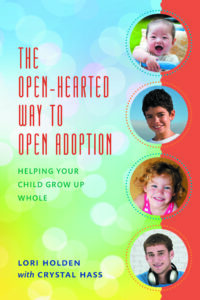
Lori Holden, mom of a young adult daughter and a young adult son, writes from Denver. She was honored as an Angel in Adoption® by the Congressional Coalition on Adoption Institute.
Her first book, The Open-Hearted Way to Open Adoption: Helping Your Child Grow Up Whole, makes a thoughtful anytime gift for the adoptive families in your life. Her second book, Standing Room Only: How to Be THAT Yoga Teacher is now available in paperback, and her third book, Adoption Unfiltered, is now available through your favorite bookseller!
Find Lori’s books on her Amazon Author page and catch episodes of Adoption: The Long View wherever you get your podcasts.

